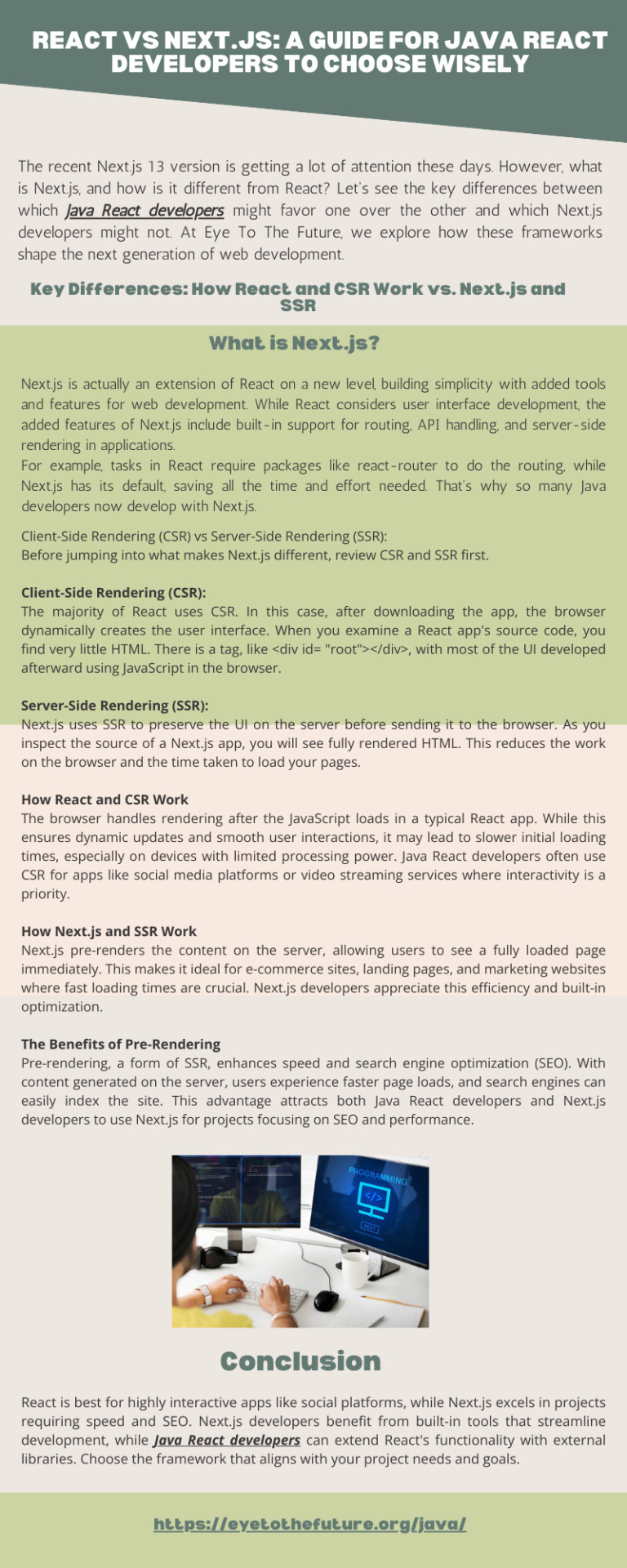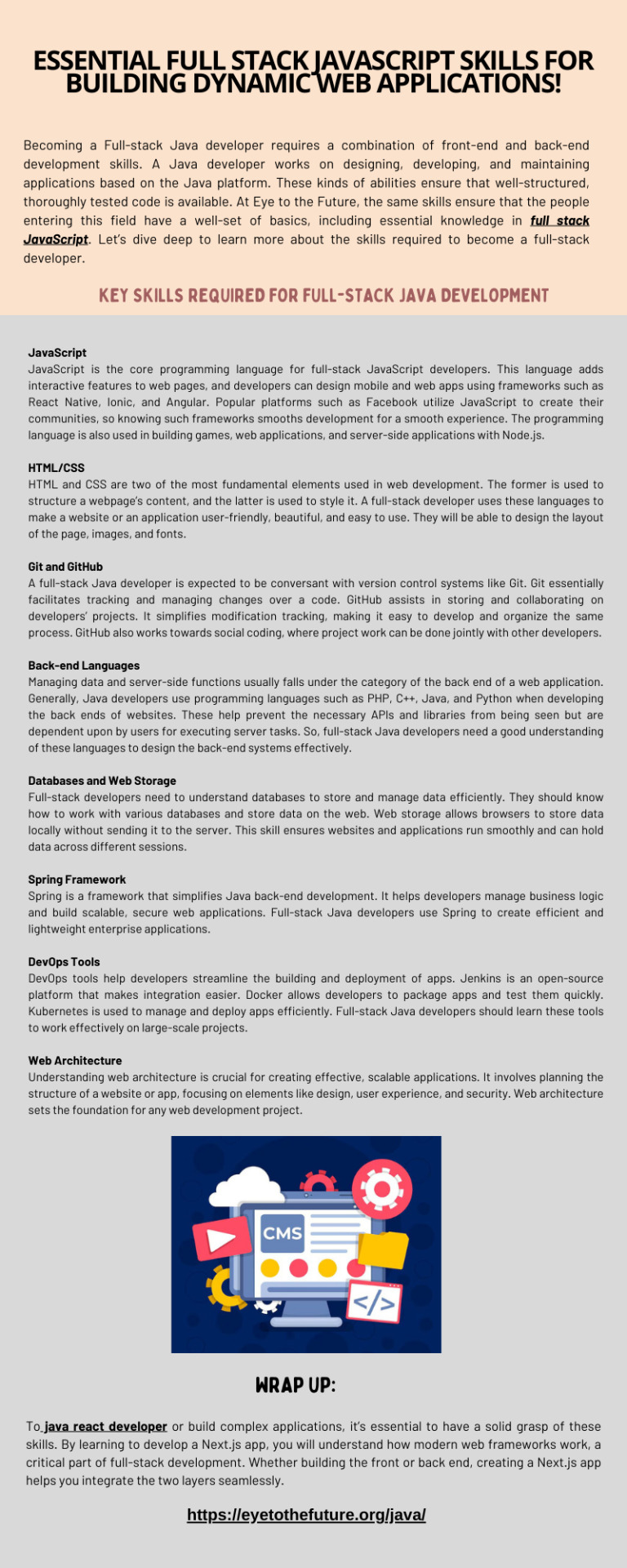At Eye to the Future, we specialize in Java development, creating scalable and secure software for fintech, regtech, and telecom industries, headquartered in Greece with extensive experience. Feel free to visit us- https://eyetothefuture.org/
Don't wanna be here? Send us removal request.
Text
React vs Next.js: A Guide for Java React Developers to Choose Wisely!

The recent Next.js 13 version is getting a lot of attention these days. However, what is Next.js, and how is it different from React? Let's see the key differences between which Java React developers might favor one over the other and which Next.js developers might not. At Eye To The Future, we explore how these frameworks shape the next generation of web development.
1 note
·
View note
Text
Eye to the Future: Powering Full-Stack Excellence with Java and React!

At Eye to the Future, REST API integration with a Java backend and a React frontend is a smart way to build modern, scalable, and efficient web applications. For a Java React developer, the backend, often powered by frameworks like Spring Boot, manages HTTP requests, routes, and data processing, ensuring secure and optimized responses. The frontend, built with React, connects seamlessly to these APIs using a component-based approach and hooks like useEffect to fetch and display data dynamically. This setup separates responsibilities, where the backend handles the data and the frontend focuses on user experience and presentation. JSON acts as the common data format, enabling smooth communication between the backend and frontend. Tools like Axios or the Fetch API in React make API calls easy, while handling errors and loading states ensures the application feels polished. Combining Java's backend strength and React's interactive frontend creates an end-to-end solution suitable for everything from small projects to large systems. With this robust integration, developers can easily adapt the skills to work as Next.js developers, bringing scalability and flexibility to any project.
0 notes
Text
Essential Full Stack JavaScript Skills for Building Dynamic Web Applications!

Becoming a Full-stack Java developer requires a combination of front-end and back-end development skills. A Java developer works on designing, developing, and maintaining applications based on the Java platform. These kinds of abilities ensure that well-structured, thoroughly tested code is available. At Eye to the Future, the same skills ensure that the people entering this field have a well-set of basics, including essential knowledge in full stack JavaScript. Let’s dive deep to learn more about the skills required to become a full-stack developer.
0 notes
Text
Getting Started with Next.js Latest Version: A Beginner's Guide!
Next.js is currently the most used framework for developing React applications; its power for developers grows with each release.
0 notes
Text
Key Skills Every Java React Developer Should Master!

A Java React developer should master several key skills to succeed in building efficient, scalable, and user-friendly applications. At Eye to the Future, we believe a Java React developer must first be proficient in Java, understanding core concepts like object-oriented programming (OOP), multithreading, collections, and newer features from Java 8+ like streams and lambdas. They should also have strong expertise in the Spring Framework (including Spring Boot, Spring MVC, Spring Data, and Spring Security) to develop reliable backend systems. On the frontend, they need solid knowledge of React.js, especially for handling state with hooks, Redux, or the Context API, as well as understanding the component lifecycle, JSX, and functional components. A full-stack developer must also be skilled in RESTful APIs, JSON, and HTTP, with hands-on experience in creating and consuming APIs. They should know HTML, CSS, and JavaScript for modern and responsive design, and tools like Webpack and Babel for optimization. Database skills are equally important, covering systems like MySQL, PostgreSQL, or MongoDB, alongside ORM tools like Hibernate. Understanding DevOps practices, including CI/CD pipelines with Jenkins, GitHub Actions, or Docker, and deploying apps on cloud platforms like AWS or Azure, adds great value. Testing knowledge is essential, using tools like Jest or React Testing Library for the frontend and JUnit or Mockito for the backend. Soft skills such as problem-solving, teamwork, and clear communication, along with Agile workflows, help deliver better results. Finally, staying current with evolving technologies, like learning to create Next.js apps, ensures relevance in this fast-changing industry.
1 note
·
View note